Large group in bronze and cloisonné enamels representing Manjusri
Japan
19th century, Meiji period (1868-1912)
Large bronze group representing the boddhisattva Manjusri in his Japanese form Manju bosatsu. He is represented perched on a Buddhist lion, seated in the ardhaparyanka position (royal relaxation), a long stole resting on the shoulders and wrapping around the forearms and extending to the feet. Dressed in a loose tunic leaving his chest uncovered, he is adorned with a large pectoral, bracelets on his arms and wrists, drop earrings and a tiara. The hairstyle falling in large locks on the shoulders, the face with a serene expression, the left hand resting on the thigh, the right hand holding the Buddhist scepter (nyoi).
The lion, mouth open and fangs visible, the tail treated in large swirling volutes and presenting tufts of hair in large undulating strands. This threatening attitude is intended to protect Buddhist doctrine and ward off evil spirits.
In the tradition of Mahayana Buddhism, bodhisattvas are spiritual beings filled with compassion for all suffering creatures. Bodhisattvas take a vow not to access Supreme Enlightenment as long as there remains a single being to save.
Manjusri is the bodhisattva of wisdom and awakened mind, personification of the teachings of the Buddha.
Bronze and cloisonné enamels
47.5 x 44.5 cm
Small bronze cast defects, wear
Private collection



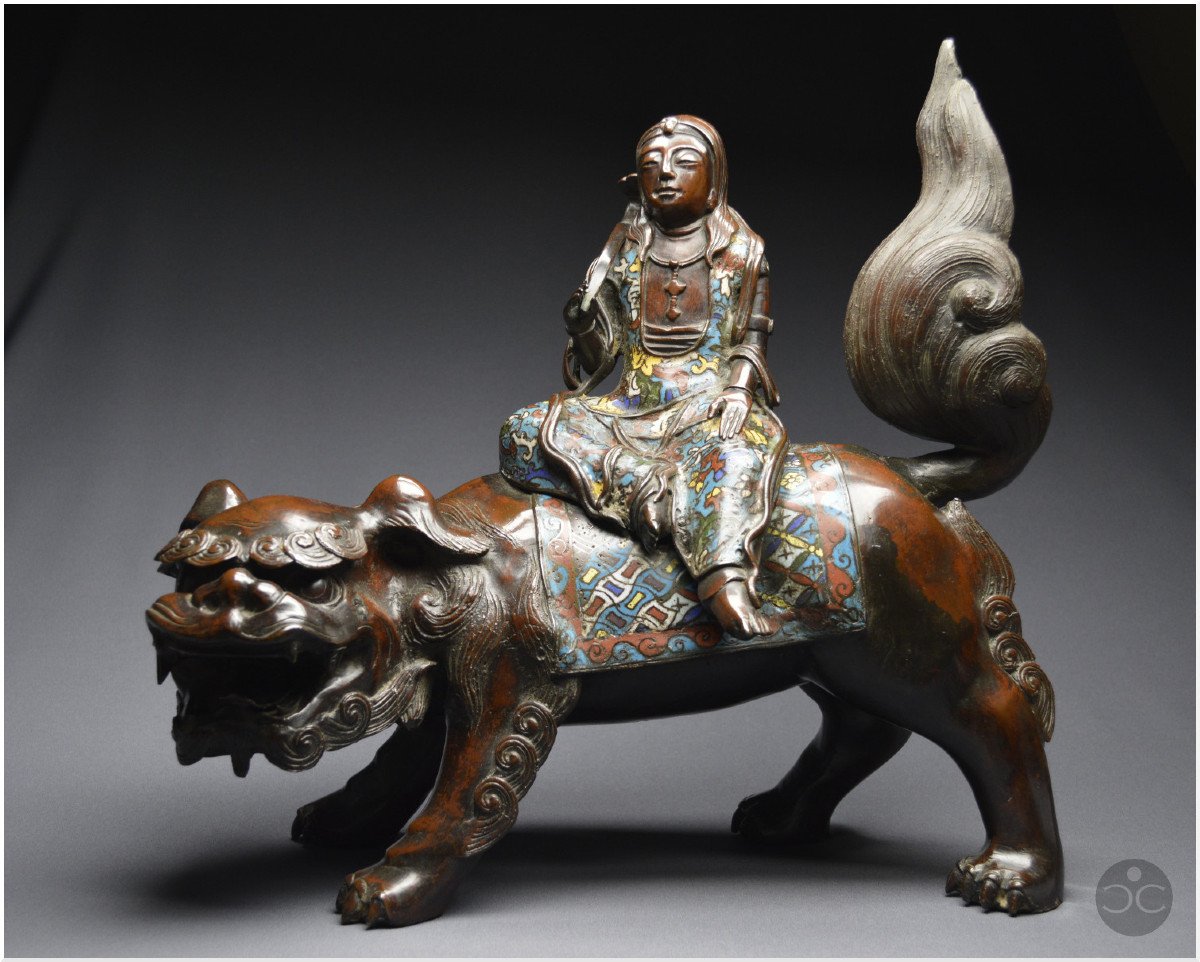
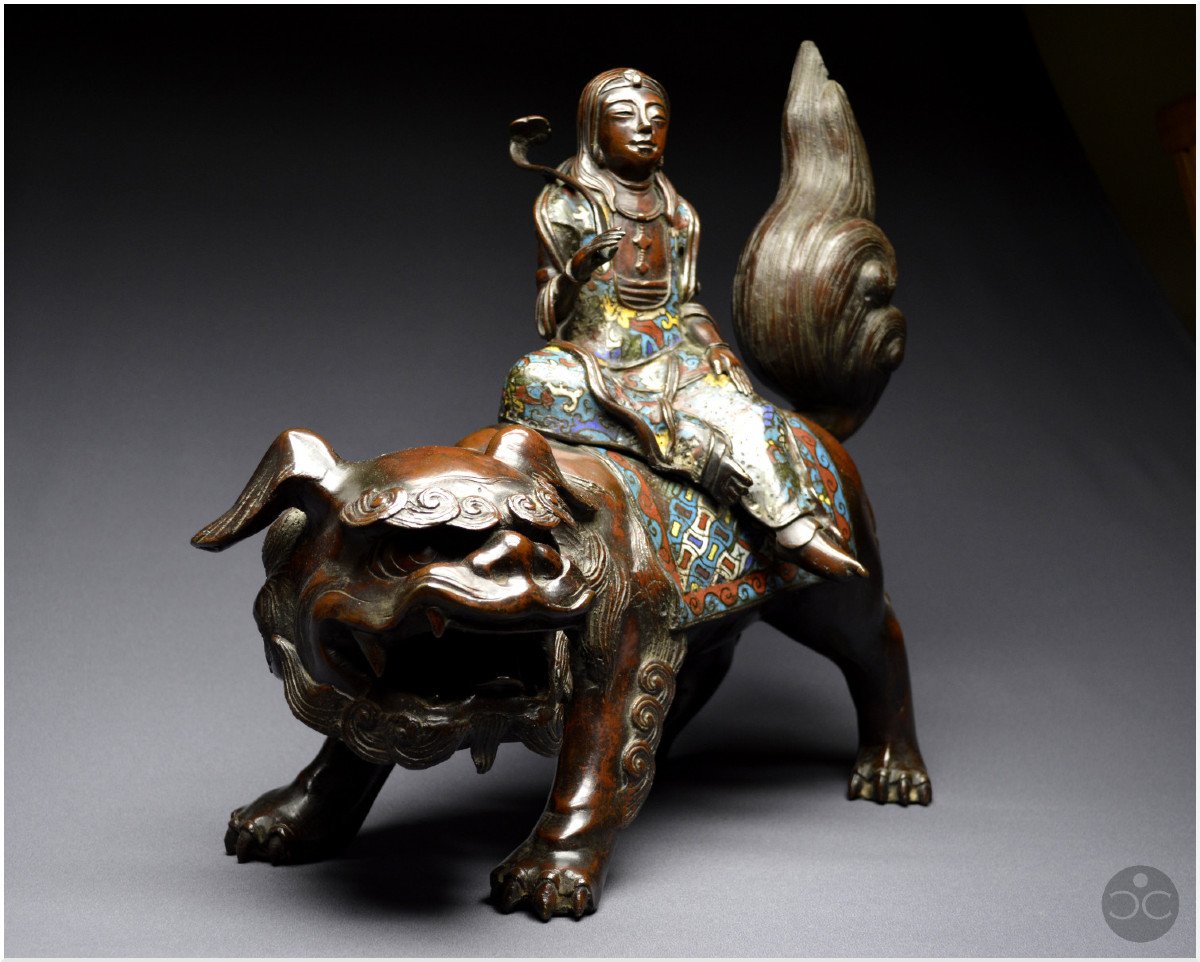
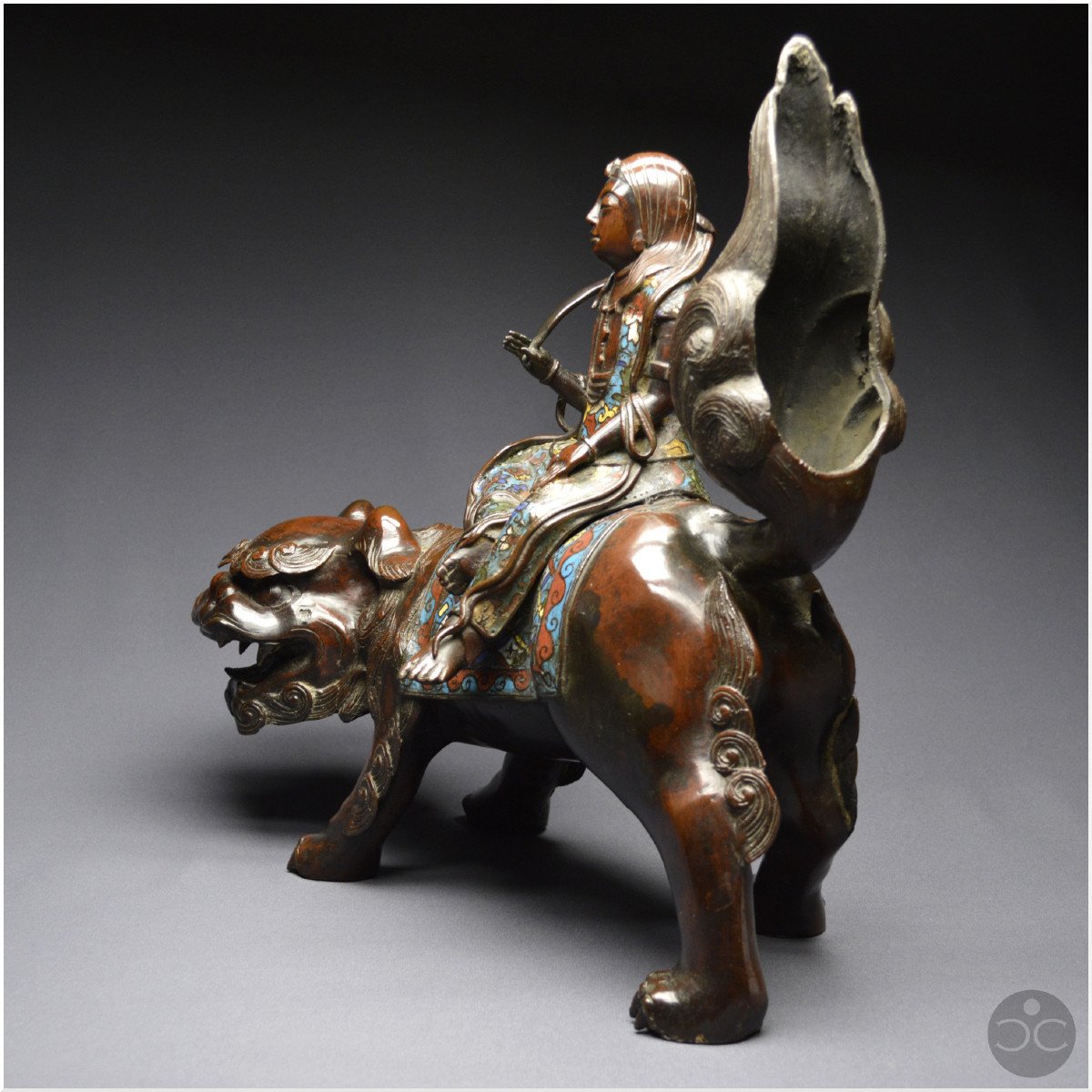
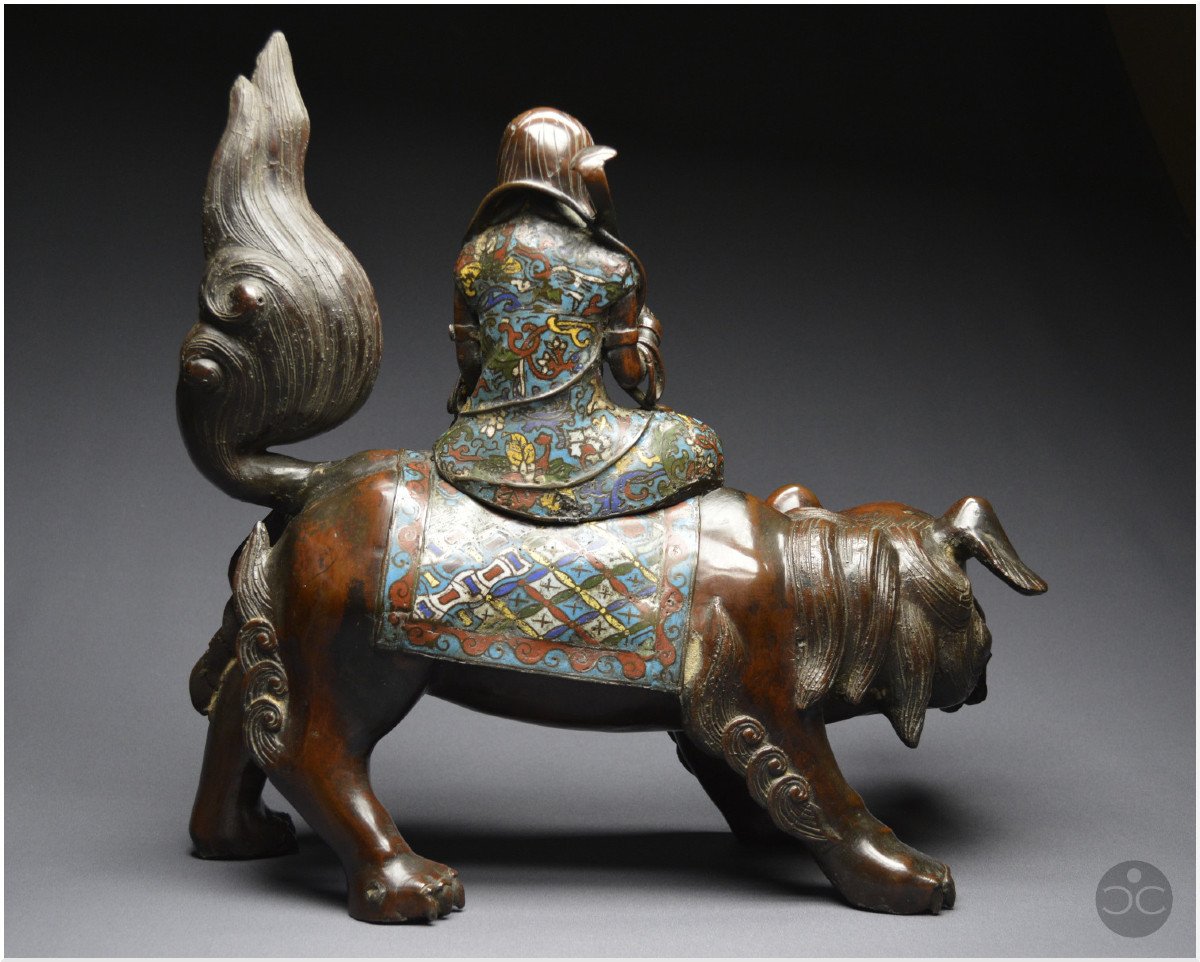
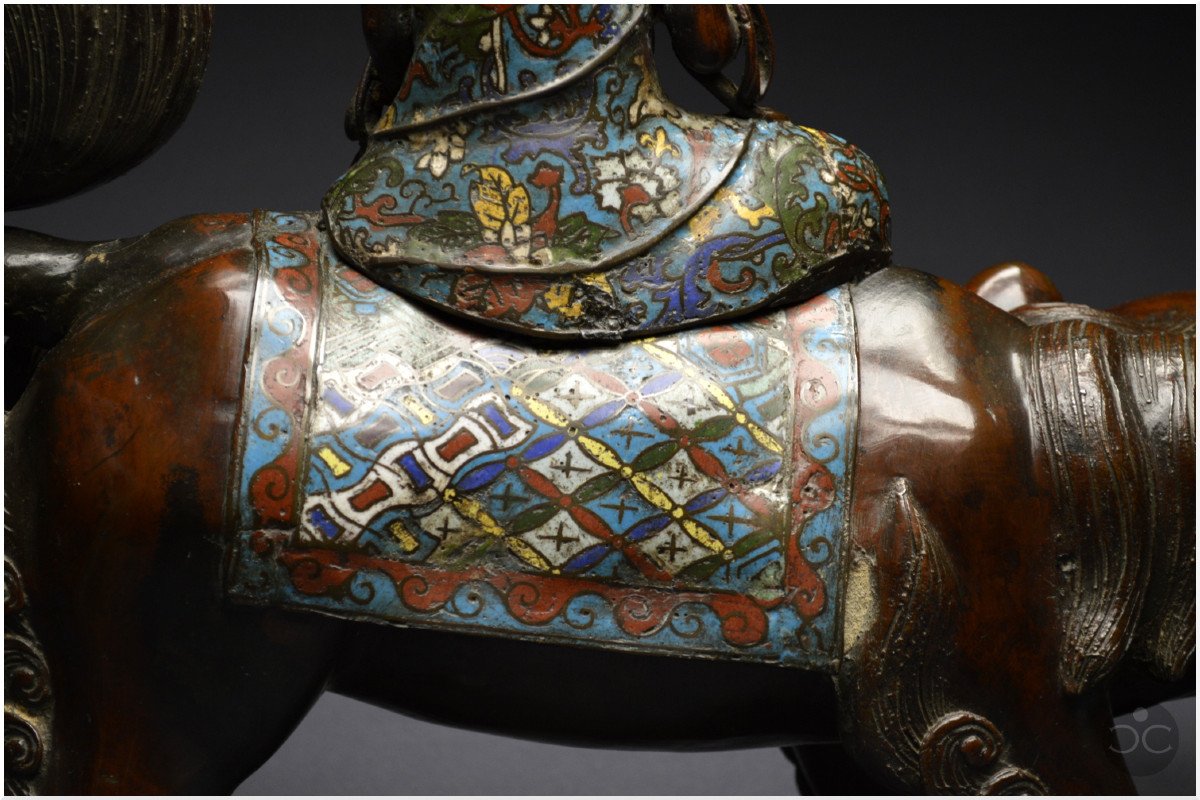
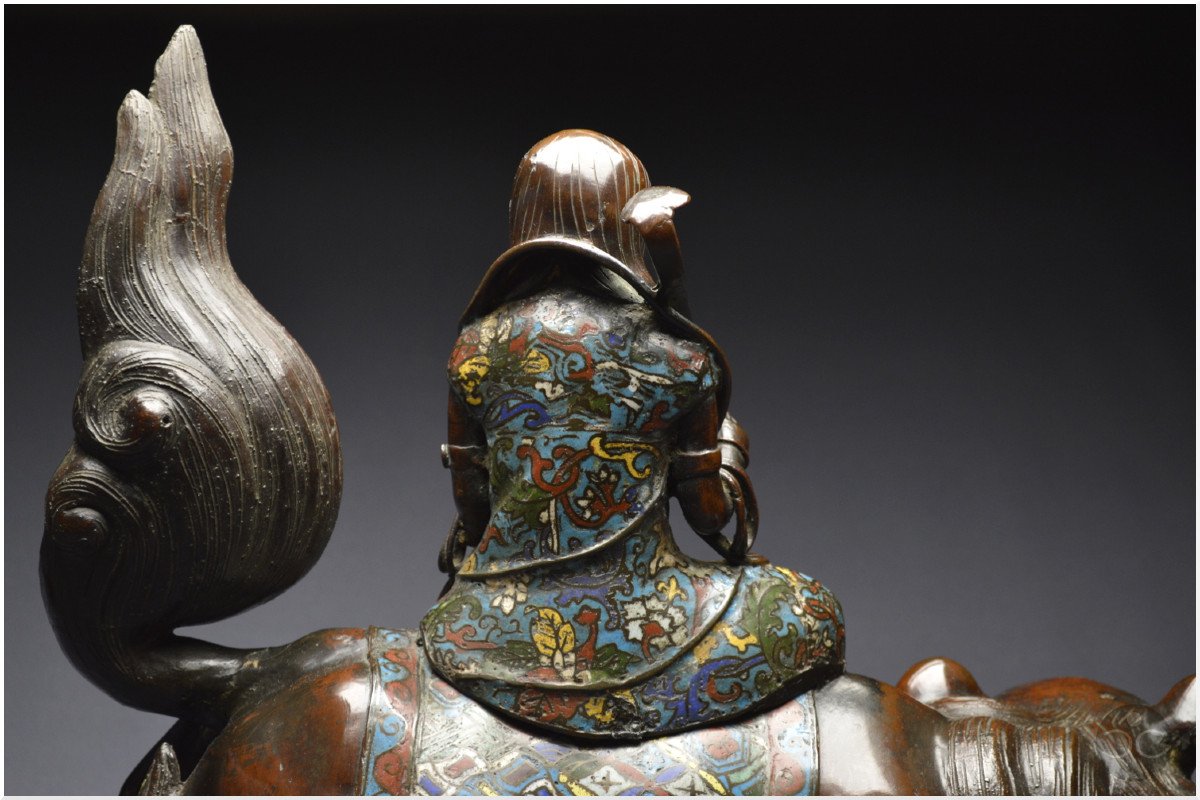
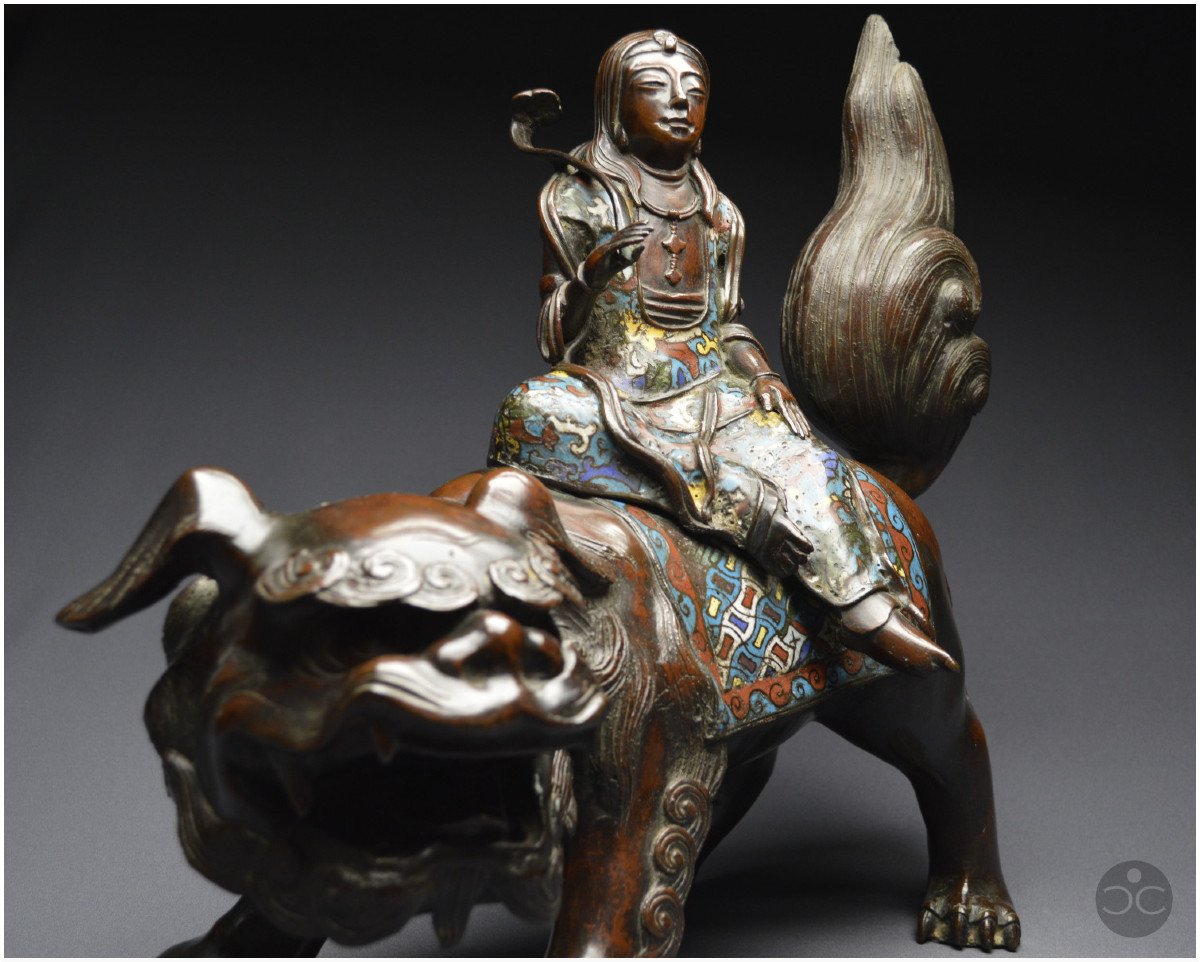
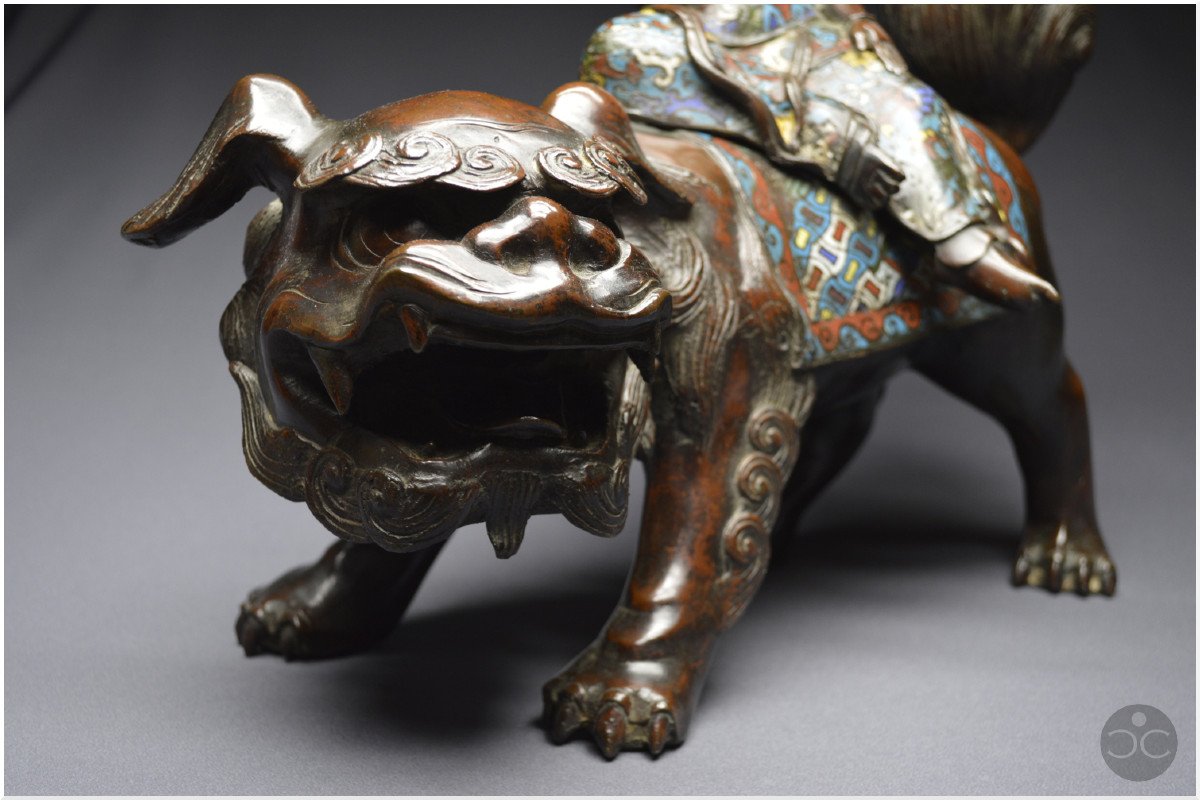
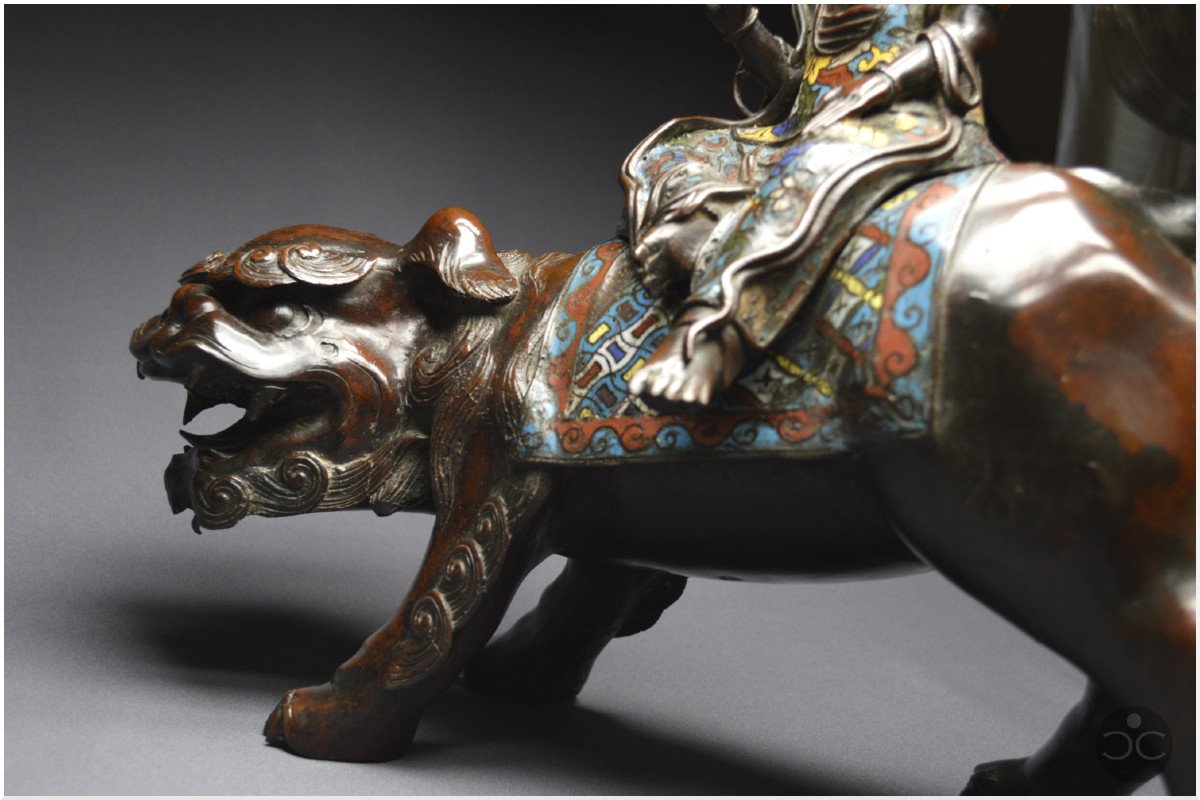
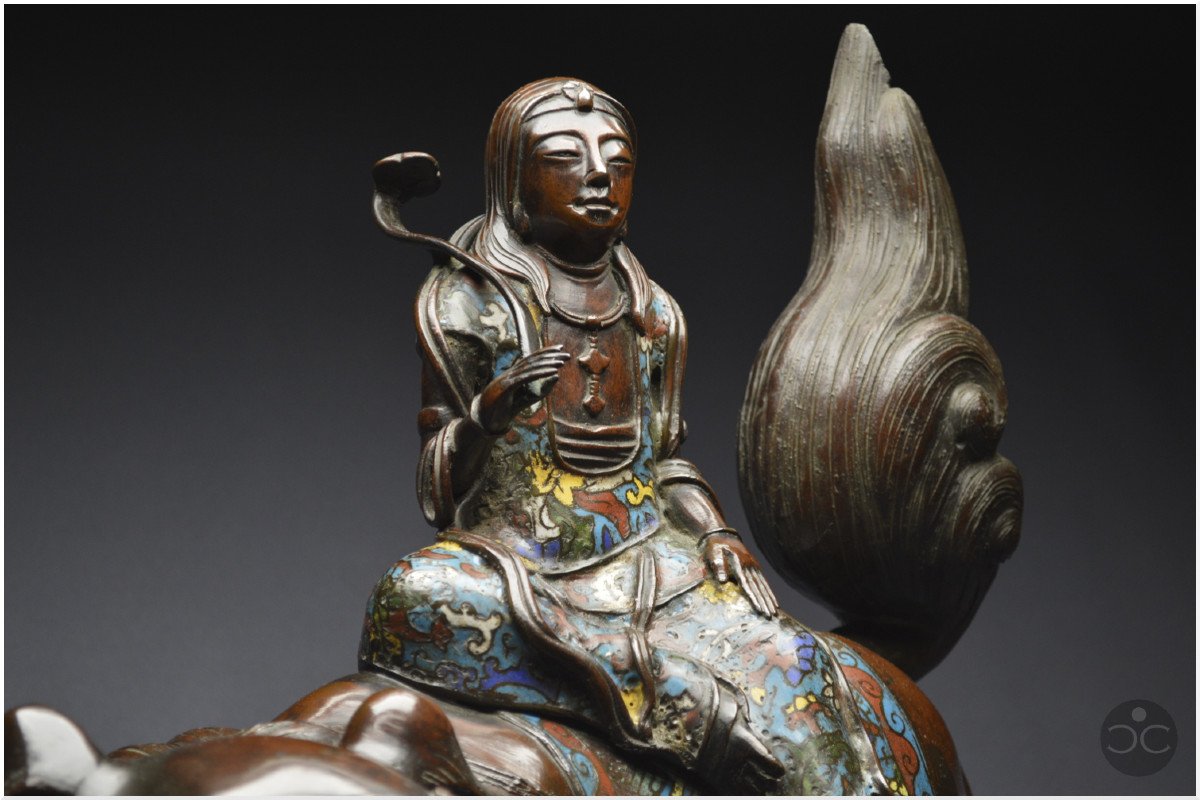
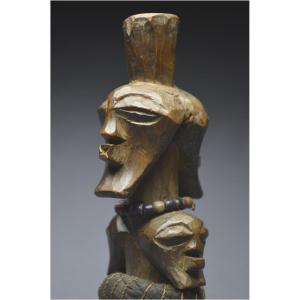

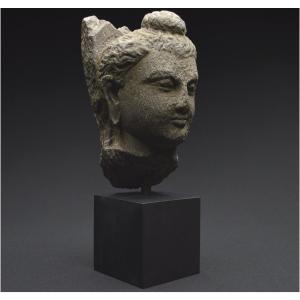
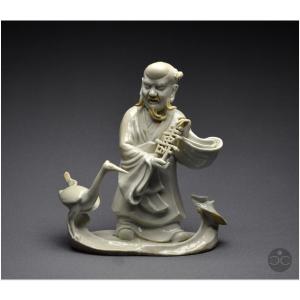
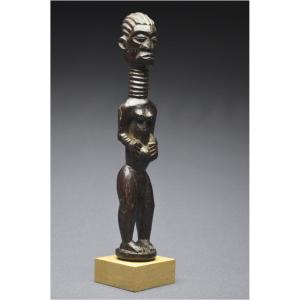


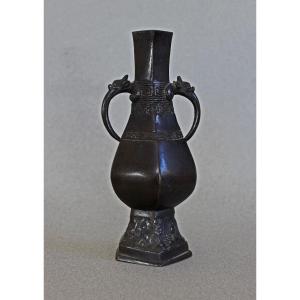







 Le Magazine de PROANTIC
Le Magazine de PROANTIC TRÉSORS Magazine
TRÉSORS Magazine Rivista Artiquariato
Rivista Artiquariato
